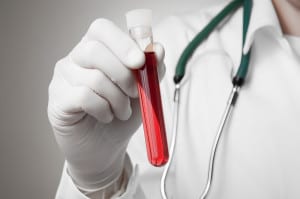Diagnostic Errors

Up to 80,000 Deaths Each Year from Diagnostic Errors
Currently, there are estimates of up to 440,000 deaths per year as a result of preventable medical error.It is estimated that there is a 15-20% diagnostic error rate. It is further estimated that these diagnostic errors result in as many as 80,000 deaths per year. This is quite remarkable in light of the 1999 Institute of Medicine study, which itself was remarkable at the time, in estimating up to 98,000 deaths per year from preventable medical errors overall.
As it happens, the Institute of Medicine’s estimates are sadly outdated with estimates now of as high as 440,000 deaths per year by preventable medical error. This estimate is so high as to seem completely outrageous until one now takes into account the 80,000-160,000 deaths each year from diagnostic errors alone.
Wide Range of Diagnosis Errors
There are a wide variety of diagnosis errors. These include wrong diagnosis, missed diagnosis, delayed diagnosis, and failure to follow up on prior diagnostic warning signs. Likewise, diagnostic errors occur in a wide range of illnesses and with a wide range of consequences to the patient.
It is safe to assume that the estimates on deaths resulting from diagnostic error are far exceeded by non-fatal errors. These errors occur at all levels of care and all levels of medical facilities. The deaths from medical errors are outrageous. The non-fatal errors can have catastrophic and permanent injuries to patients. The toll on patients and their families is extraordinary.
Diagnostic Errors Not Tracked or Reported
Having potentially deadly consequences, it is astonishing that diagnostic errors are neither monitored nor tracked.The studies point to some troubling facts about diagnostic errors. Perhaps most troubling is the fact that they are not closely monitored or reported. In other words, the numbers may be deficient due to lack of reporting.The fact that diagnostic errors are not adequately tracked or reported is inexcusable in light of the fact that it is well recognized that they are the most frequent, harmful and costly errors in medical care. The Joint Commission Journal on Quality and Patient Safety reports that “there is not a single HCO in the United States that is systematically measuring the rate of diagnostic error in its clinics, hospitals, or emergency departments.”
Most Common Diagnostic Errors
Breast cancer leads the way in failed diagnoses, which is very unfortunate considering the high survival rate when it is diagnosed correctly. Among the most common diagnostic errors are the delayed diagnoses of cancer and coronary artery disease. These are also the most serious often leading to the death of the patient. Failed cancer diagnosis occurs with breast cancer, lung cancers, colon cancer and prostate cancer.
Leading the way in failed cancer diagnosis is the failure to diagnose breast cancer. This is more than tragic in light of the high survival rate when breast cancer is properly diagnosed. Reflective of this problem is the fact that failed diagnosis of breast cancer is the most frequently filed medical malpractice claim.
Patients Must Protect Themselves
Sadly, patients cannot rely on their doctors or other medical providers to keep them safe from preventable medical error. The numbers speak for themselves.
It has long been advised that patients need to protect themselves. There are numerous measures to do so. Fortunately, in the case of diagnostic errors, there are a number of resources available for patients and families to protect themselves against these errors.
It is really quite absurd to ask a patient to protect him or herself from a medical provider. But this is the reality of medical care today. The patient and the family should, to the degree possible, equip themselves to be protected against diagnostic errors (and other medical errors as well).
Patient Safety Resources: Here are a couple of good places to get started with regard to diagnostic errors:
- National Patient Safety Foundation’s Patient’s Toolkit for Diagnosis
- Preventing Diagnostic Error Resources
Sources for this Article include:

